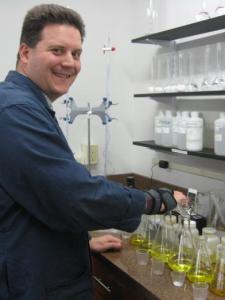
Ashby W. answered • 04/08/13
Patient chemistry tutor with graduate level experience
The Atomic number is the number of protons in an atom. The mass number is found by taking the sum of all of the protons and neutrons in an atom and adding them together.
However, the mass number you calculate will always be slightly different than the mass on the periodic table because the periodic table also takes into account the percents of isotopes that exist naturally on Earth.








Dick B.
Again, "mass number" and "atomic mass" are two very different things, that happen to approximately correspond.
"Mass number" is simply the number of nuclear particles (protons and neutrons).
"Atomic mass" is the actual mass of the atom. Keep in mind that protons and neutrons do not have masses of exactly one amu. Even if they did, the mass of the nucleus is not the sum of the masses of the nuclear particles.
There is only one isotope of one element for which the mass number and atomic mass are exactly the same. That is carbon-12, and happens because the amu is defined as 1/12 of the mass of a carbon-12 atom.
04/10/13